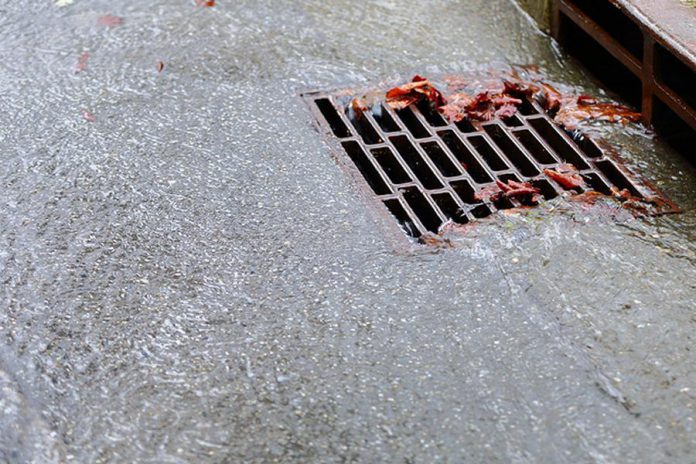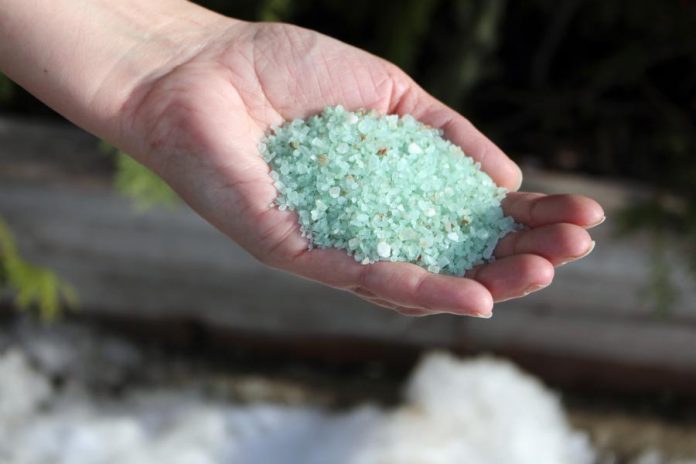
So far this year, the weather has been up and down like a yo-yo. Over the past month we’ve seen temperatures as low as -25C° and as high as +10C°, with days that have brought us everything from frigid winds and freezing rain to meltwater and puddling around sewer grates.
This winter, it seems we must be ready for any type of weather. It’s easy to keep the rain boots and umbrella handy in case of a sudden rise in temperature, but it may not always seem as easy to keep your home prepared.
There are many things we can do to be prepared for a freeze up, and for a thaw; one of the best ways, whether it’s in frozen or liquid form, is to keep water in mind over the winter.
Although it comes and goes, snow is inevitable during a Peterborough winter. Most of us take time to pull out the shovel to clear a safe way for walking and parking the car, but also keep an eye out for storm drains. Storm drains should be kept clear of snow, ice, and debris, especially in the winter. If you have a storm drain located near your home, take a look for it when you’re shovelling your driveway; if the plow has gone by, the drain is likely buried.
Clearing away snow and ice from around the drain will prevent flooding from happening if there is a rise in the temperature. This is particularly important during a thaw or come spring when one of the main causes of localized flooding is a blocked storm drain.

If snow is melting rapidly, it’s a good time to go outside and see how and where the water flows around your home. Check your eaves, downspouts, and surfaces in your yard that will point you toward flood-prone areas. Areas of pooling water can sometimes be easily remedied by simply adjusting the downspout, but you may want to take note of bigger fixes like levelling patio stones, or installing a rain barrel that can help when the weather is warmer.
If water is pooling, it could quickly turn to a slippery ice patch during a freeze-up. While salt is a popular choice for clearing ice in the winter months, using too much salt can have a negative impact on buildings, wildlife, vehicles, clothing, vegetation, and pets.
Salt is effective but should be used wisely. Shovel the snow first and then treat only the ice patches. It is important to remember that a little salt goes a long way. In many cases, only one tablespoon of salt is needed for a one-metre square area!
Better yet, forget the salt altogether and use an environmentally friendly alternative; sand, non-clumping cat litter, and fireplace ashes are great salt alternatives that provide traction on icy areas. You can also purchase salt-substitutes like Swish Clean and Green Ice Melter. It contains magnesium chloride, which is gentle on your gardens, concrete walkways, carpeting, and your pet’s paws, and is available at the GreenUP Store.
“We often think about water during times of flood or drought, even though we are most surrounded by water in the winter — snow!” says GreenUP Water Programs Manager Heather Ray. “Whatever we put on the snow in the winter, such as salt on the walk or driveway, will likely make its way into local waterways.”
When overused, salt can run off and cause harm to fish and wildlife in local waterways, and so can other pollutants. Debris and surface water pollutants such as cigarette butts and pet waste may seem to ‘disappear’ in the snow, but these contaminants will emerge from melting snow banks and can wreak havoc on aquatic life.
“Winter is a great time to start rethinking our connection with water,” Ray suggests. “How we impact water in one season can impact water well into the next season. When I see my kids playing in the snow, I think about how what is happening in winter can impact them down the line, while they are swimming at the beach, fishing at the lake, and drinking a glass of water.”

While no one is over-watering their lawn in February, we also still need to keep conserving water in winter. Water conservation messages are popular during the summer months when outdoor water use can increase upward of 50 per cent, but it is still important to conserve water during the cold season.
Reducing water use in the bathroom, kitchen, and laundry room can be easy with the use of low-flow features, and by not letting unused water flow down the drain. If you are dreaming of a hot shower to warm up this winter, consider capturing the cold water that runs while you wait for water to warm up. You can use it for watering plants or changing the fishbowl.
It is also a good idea to keep a close eye on your water meter in winter when cracking or bursting pipes can be a concern. To check for leaks, simply turn off all the water in your home and then check the flow indicator on your water meter. If it is moving, you have a leak somewhere.
You can learn more about how to read your water meter, and sign up for a weekly email tracking your water consumption by contacting Peterborough Utilities at www.peterboroughutilities.ca/Water/Water_Meters.
It is a good idea to stay on top of the winter water maintenance, be sure to take time to play in the snow, too! Snow is water, so have fun with it! The more we connect with water and develop a positive relationship with it, the more we will want to conserve and protect it for future generations.


























